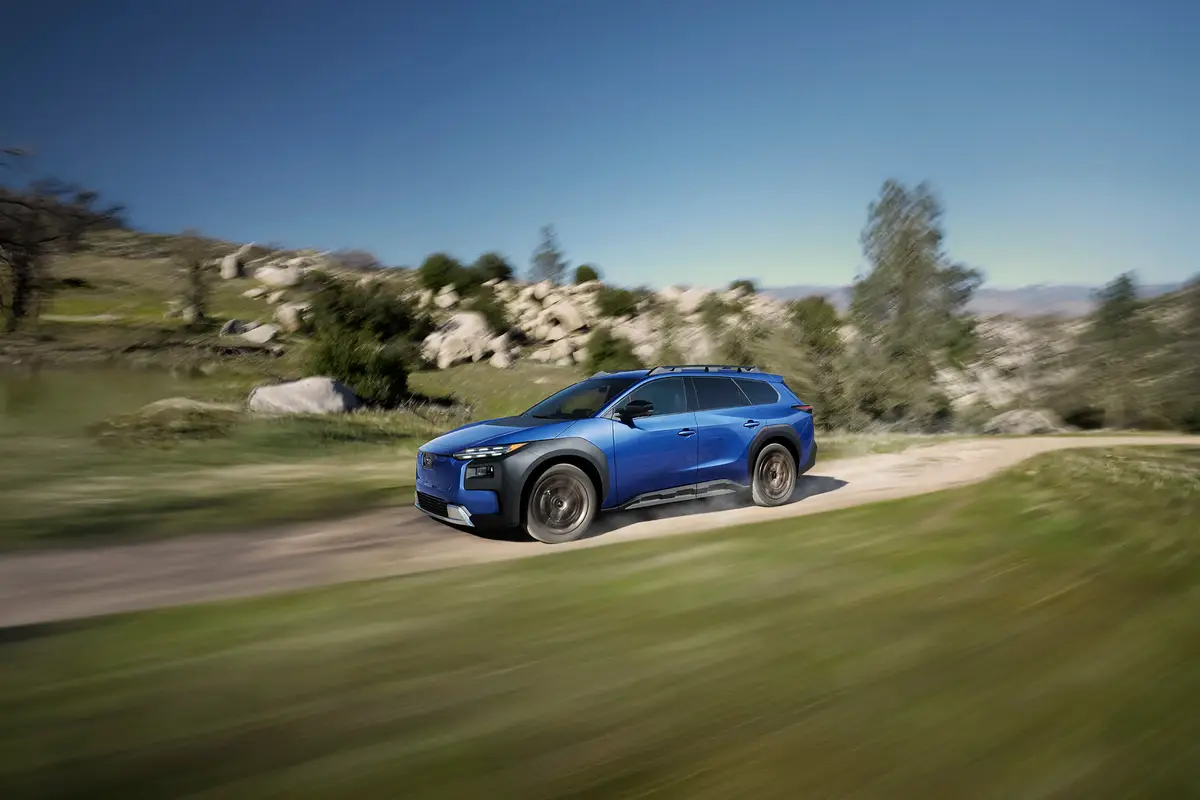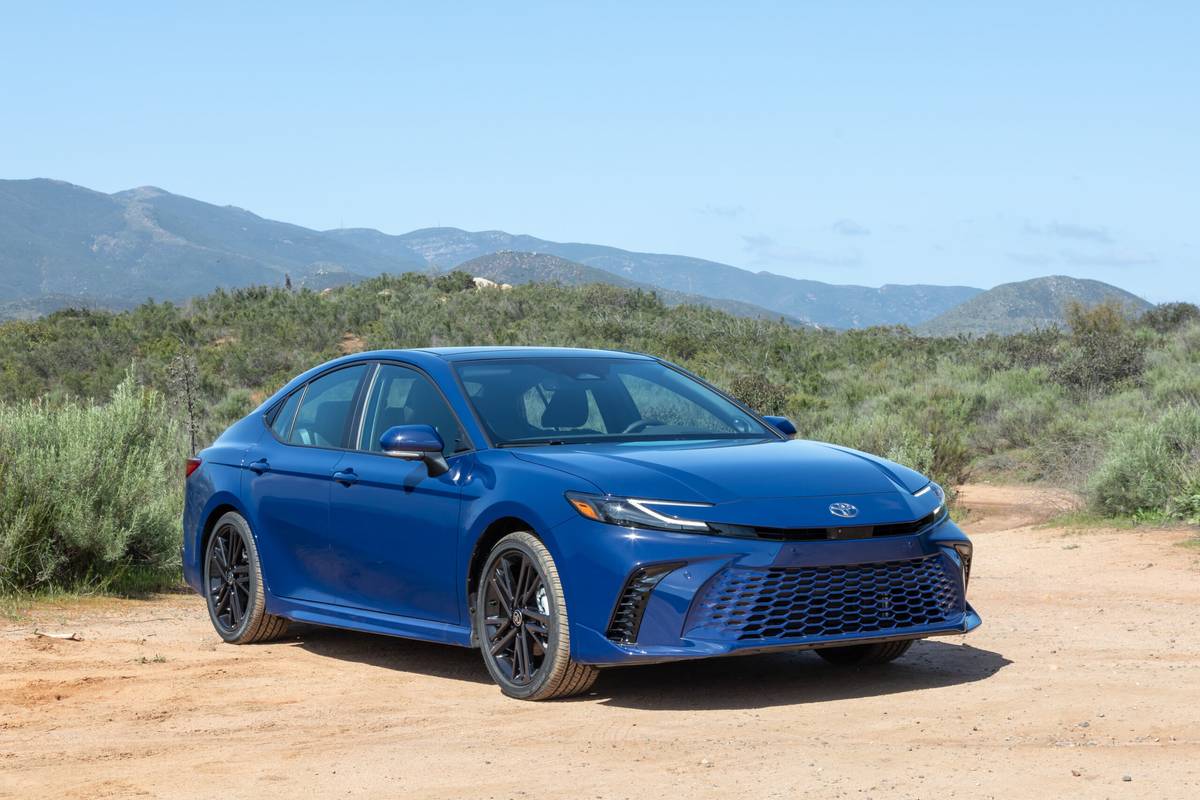Star-Telegram.com's view
It’s hard to predict today what vehicles currently on the market will be coveted as collector cars 35 years from now, but at least one group of auto-history buffs believes the big, boxy Ford Flex crossover utility vehicle is the best bet among the current crop.
With this group, you had to know the choice was going to be a domestic vehicle, though – they are the Friends of the National Automotive History Collection at the Detroit Public Library.
The Friends organization voted the Flex most likely to succeed as “Collectible Vehicle of the Future” – in the year 2034 – from among eight new vehicles launched for 2009.
That might be a stretch, though, as the Flex really didn’t break any new ground with its shape; it’s just bigger than any other recent vehicle with the same basic styling – such as the Jeep Commander, Honda Element, Scion xB, and Nissan Cube.
What the Flex does for Ford, though, is what’s really important: It gives the brand a credible entry in the large-crossover segment to compete against General Motors’ popular trio, the Chevrolet Traverse, GMC Acadia and Buick Enclave, as well as the top import model, the Honda Pilot.
The Flex has the most unusual styling among the bunch, for sure, and it seems to be one of those polarizing designs that leaves no middle ground – people either love it or hate it. Nobody gets that charged up about the GM models in either direction, which is probably a better idea when it comes to designing a vehicle.
For 2010, though, the Flex has a new secret weapon that could overcome any objections someone might have about its severe styling. Ford has brought its twin-turbocharged, 3.5-liter EcoBoost V-6 engine to the Flex as a $2,995 option to the all-wheel-drive versions of the midlevel SEL and top-of-the-line Limited models.
Also featured in the 2010 Ford Taurus SHO and two new Lincoln vehicles, the MKS sedan and MKT crossover (built on the same chassis as the Flex), this engine offers a class-leading 355 horsepower with fuel economy similar to that of the engines in competing vehicles that have nearly 100 fewer horses.
The Flex, introduced for 2009 after hanging around at various U.S. auto shows for three years first, is about the same size as the Ford Expedition, but has that crossover design that incorporates body and frame as one unit, giving it lighter weight and more nimble handling than that of the Expedition, a traditional body-on-frame SUV.
Ford assembles the Flex and Lincoln MKT at its Oakville, Ontario, Canada plant along with its five-passenger, midsize crossovers, the Ford Edge and Lincoln MKX.
Sales got off to a slow start as Ford introduced the Flex in late summer 2008 in the middle of the biggest decline in auto sales in a quarter of a century (not to mention the highest gasoline prices in that period, as well). But the vehicle is now showing some traction in the marketplace, and the addition of the EcoBoost engine should bring even more consumers into the Flex fold.
The first version of the vehicle that would eventually be named Flex was the Fairlane concept unveiled at the 2005 Detroit auto show. The production version of the Flex was first shown at the New York auto show in March 2007, and it’s first South Texas appearance was at the 2007 San Antonio auto show.
As for where I weigh in on the styling, I happen to think it’s very cool. But beyond that, it’s also quite practical, as the exterior shape allows for an enormous interior that can hold up to seven people and a whole lot of stuff.
Flex prices for 2010 range from $28,550-$42,065 (plus $775 freight), starting with the base front-drive SE model and ranging to the Limited all-wheel-drive model with the EcoBoost engine.
Our test vehicle was the midlevel SEL with all-wheel drive and the EcoBoost engine. It had a base price of $36,115, but with freight and options, it rang up at $41,555 (which included a discount of $845 off the selected options).
This is no Spartan vehicle with an austere interior. The Flex SEL is crafted like a luxury vehicle, and there are tons of standard amenities that make it feel more like a Lincoln than a Ford.
The seats, first off, are big and comfortable, no matter where you happen to sit. Our tester was configured for six passengers, although a three-person bench seat can be chosen for the middle row in place of the reclining captain’s chairs. But unless you absolutely need the extra seat, why bother messing with such comfort?
Interior styling is fluid and functional at the same time, and it’s evident that a lot of care was taken into designing every element of this vehicle’s cabin. Nothing was left to chance, which unfortunately has been a problem for the U.S. automakers in the past.
Among standard features in our vehicle were a 10-way power driver’s seat and six-way power front passenger seat, both of which were heated. The second-row seats are designed to have best-in-class legroom, and they come with adjustable and removable footrests.
Woodgrain trim accents were quite pleasing to the eye, and the leather-wrapped steering wheel added to the elegance. Standard on the SEL is an AM/FM/six-CD audio system with the cool Microsoft SYNC voice-command system (works your iPod, even).
But our tester came with the optional Sony 12-speaker system (SYNC also included), as part of a $3,895 package that also brought 20-inch bright painted-aluminum wheels, leather seats for the first two rows (vinyl back where the kids sit), electronic power steering, chrome dual exhaust outlets, and manual shift paddles on the steering wheel for the six-speed automatic transmission.
Also included in this package was a convenience group, which brought a power rear liftgate, rear 110-volt power outlet, power-adjustable pedals, and a memory for the driver’s seat, among other things.
Our vehicle also came with the auto-fold middle-row seats ($650); trailer-tow package ($570), which gave it a 4,500-pound towing capacity; and a silver two-tone roof ($395).
Dual-zone automatic climate control was standard, along with power windows/heated mirrors/door locks with remote, and that Ford keypad next to the front door that allows for unlocking the vehicle without a key or remote.
Other standard features include automatic headlights, fog lights, privacy glass, 50/50 fold-flat third seat, the reverse-sensing system, Ford’s new capless fuel tank, and four 12-volt power points. The reverse-sensing system sounds an alarm if the vehicle nears a solid object while backing up.
Among other standard safety features are electronic stability control with traction control, four-wheel antilock disc brakes, tire-pressure monitoring, front seat-mounted side air bags, and the Ford safety canopy side-curtain air bags for all three rows. To help keep the body strong enough to withstand crash forces, the Flex has side intrusion beams in the doors, high-strength boron steel and specially designed, energy-absorbing interior door trims, Ford said.
Optional is a rear back-up camera mounted in the bottom of the tailgate. The system automatically activates when the transmission is shifted into reverse, giving a fisheye-lens view of the entire area behind the vehicle, using the in-dash screen of the optional navigation system.
EPA fuel-economy ratings are 17 mpg city/24 highway for the base engine with front-wheel drive; with all-wheel drive, the ratings are 16/22 for either engine. The EcoBoost engine is available only with all-wheel drive.
Ford’s intelligent all-wheel-drive system uses an on-demand electronic center coupler to allocate torque automatically as needed between front and rear – with up to 100 percent available to either axle, Ford says. No low-range gearing is provided for serious off-road driving, however.
The Flex is offered with an optional multi-panel sunroof ($1,495), which gives occupants of all three rows their own view of the sky. Also available is a dual rear DVD entertainment system ($1,995), which puts a separate screen and player in the back of each of the front headrests.
Exclusive to the Flex is an optional refrigerated console between the second-row captain’s chairs. It can cool bottles or cans of soft drinks to 41 degrees in two-and-a-half hours, which Ford says is 40 percent faster than a home refrigerator.
The automotive columns of G. Chambers Williams III have appeared regularly in the Star-Telegram since 1994. Contact him at 210-250-3236; chambers@star-telegram.com.
The package: Full-size, six- or seven-passenger, five-door, V-6 powered, front- or all-wheel-drive crossover utility vehicle.
Highlights: Ford’s biggest crossover gets the new twin-turbo EcoBoost V-6 as an option for 2010. The odd boxy styling isn’t a new idea – it’s like a giant version of Toyota’s Scion xB – but it makes this a quite roomy family wagon.
Negatives: Can get quite pricey with all the options, especially the EcoBoost engine.
Length: 201.8 inches.
Engines: 3.7-liter normally aspirated V-6; turbocharged 3.5-liter EcoBoost V-6.
Power/torque: 262 HP./248 foot-pounds (base 3.5); 355 HP./350 foot-pounds (EcoBoost).
Transmission: Six-speed automatic.
Brakes, front/rear: Disc/disc, antilock.
Curb weight: 4,471-4,839 pounds.
Cargo volume: 20 cubic feet (behind third seat); 43.2 cubic feet (third seat folded).
Towing capacity: 4,500 pounds.
Electronic stability control: Standard.
Side air bags: Standard front seat-mounted, and side-curtain for all rows.
Fuel capacity/type: 18.6 gallons/unleaded regular.
EPA fuel economy: 17 city/24 highway (front drive); 16/22 (all-wheel drive).
Major competitors: Honda Pilot, Acura MDX, Chevrolet Traverse, GMC Acadia, Buick Enclave, Toyota Highlander, Jeep Commander.
Base price range: $28,550-$42,065 plus $775 freight.
Price as tested: $41,555 (SEL all-wheel drive with EcoBoost, including freight and options).
On the Road rating: 8.5 (of a possible 10).
Prices are manufacturer’s suggested retail; actual selling price may vary.
Latest news



